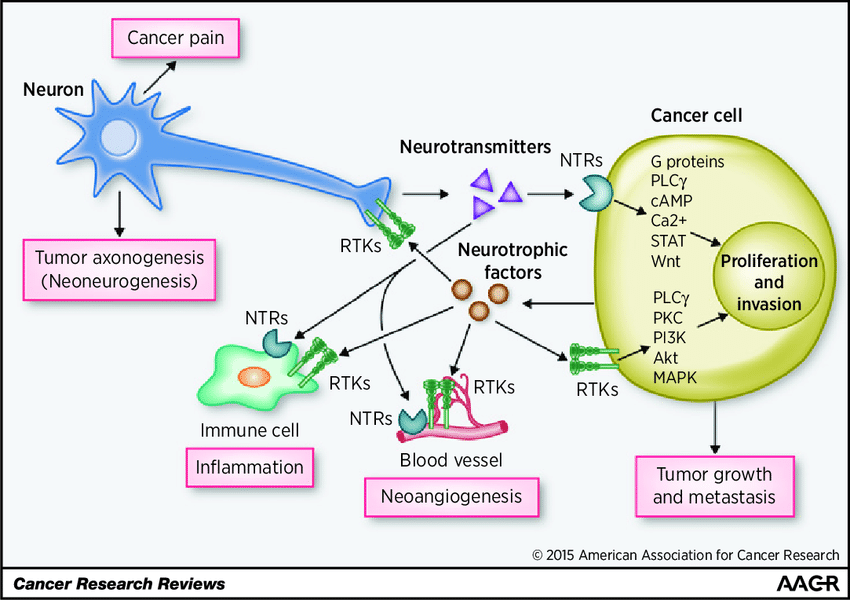How our cells ‘talk’ to each other
In our previous Column, we explained how meat and dairy products cause the blood levels of a growth hormone going by the name IGF-1 to increase, which can lead to an accelerated birth and growth of new cells and at the same time prevent the removal of old cells: both of which favour the start of cancer growth.
To understand how this happens we need to explain how our cells ‘talk’ to each other. Cellular communication is inexplicably complicated but I will try to summarize it as simply as possible. Cells communicate through their own language of chemical signals. After the first cell molecule is ‘contacted’ by a messenger chemical molecule (or receives a signal), it activates another molecule. This process is repeated again and again, until the last molecule is activated and a particular cell function is carried out. It’s like a message being passed on from one person to the next and the next in a meeting room. The totality of these chemical reactions is called a ‘signalling pathway’.
To give an example, as we explain in our health seminar, when the pancreas detects a person has just eaten, it releases the hormone insulin in the bloodstream to ‘tell’ all the cells in the body to be ready to open their ‘door’ to let the sugar in when it builds up in the blood after the meal. Just as a person needs ears as much as a mouth to have a conversation, cells use proteins (called ‘receptors’) either on the outer cell wall or inside the cell itself to “hear” different signals. Once the chemical carrying the information binds to a receptor, that protein turns on a signalling pathway, propagating the signal through the cell, ultimately leading to the cell’s response. Every cell has receptors that can detect a lot of different signals, so they are constantly bombarded with biological conversation.
In this way, there are thousands of ‘conversations’ that take place every second that deal with the various cell functions that constantly need to be monitored and adjusted. Any pathway is highly regulated by multiple mechanisms and in addition, can ‘cross-talk’ with other signalling pathways. Through these complex signalling interactions normal cellular function is assured. However, the complexity of the many signalling pathways is such that errors in signalling interactions can take place that upset normal cellular function and lead to various diseases, including cancer.
To give an example, let’s go back to the Insulin Signalling pathway described above. In the case of persons suffering from Type 2 diabetes, many of the liver and muscle cells will be filled with fat particles. One could compare the cell with a room that normally would only have a few people in it, but now was crowded with 100 people… Under normal circumstances, the ‘message’ was easily passed on between the few people and would lead to the ‘door’ to be opened to let the sugar in. But now, with 100 people in the room, the ‘message’ got lost and the ‘door’ to let the sugar in remained closed… The doctors call this ‘insulin resistance’, which is the underlying cause of Type 2 diabetes.
When the diabetic patient then follows the whole food plant based (WFPB) diet that METI recommends, the fat deposits in the cell gradually get absorbed: it is like the excess people in the room gradually leaving, until suddenly the signalling pathway’s message is noticed again and the ‘door’ is opened to let the sugar in… In the next Column we will focus on how particular signalling pathways can become crooked and dysfunctional, leading to cells becoming cancerous. One can compare such incidents to a ‘virus’ creeping into your computer and damaging its operating system.
What do you do in such occasions? Do you raise your arms in desperation and throw away your computer? No! You call the IT specialist, who in most cases can ‘fix’ the problem… METI’s experience with cancer allows us to be optimistic that in many cases crucial signalling pathways that have become damaged can be fixed through a powerful and sustained nutritional approach, based on the WFPB diet that METI has been promoting for the past 10 years.
In the meantime, we invite you to visit METI’s Healthy Living Clinic at House No. 51 at Motootua (across from the Kokobanana Restaurant) to become acquainted with METI’s whole food plant based diet and Lifestyle Change program and reap its benefits if you suffer from cancer or a chronic disease. You can also purchase METI’s WFPB Cookbook with 50 recipes written in English and Samoan. You can contact us at 30550.
Tags











